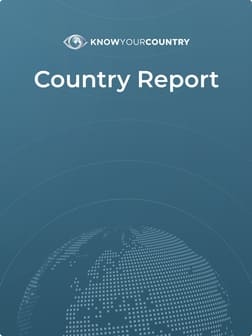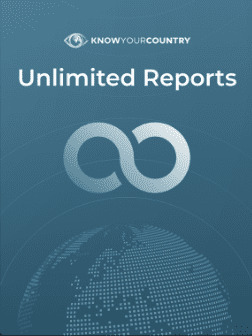
Tokelau Country Summary
Sanctions
No
FATF AML Deficient List
No
Terrorism
Corruption
US State ML Assessment
Criminal Markets (GI Index)
EU Tax Blacklist
Offshore Finance Center
Background Information
Anti Money Laundering
FATF Status
New Zealand is not on the FATF List of Countries that have been identified as having strategic AML deficiencies
Compliance with FATF Recommendations
The latest Mutual Evaluation Report relating to the implementation of anti-money laundering and counter-terrorist financing standards in New Zealand was undertaken in 2021. According to that Evaluation, New Zealand was deemed Compliant for 8 and Largely Compliant for 20 of the FATF 40 Recommendations. It was deemed Highly effective for 2 and Substantially Effective for 4 of the Effectiveness & Technical Compliance ratings.
2013 Asia Pacific Group on Money Laundering Yearly Typologies Report – Trends
The existing banking and financial environment remains the main conduit for ML, in line with jurisdictions all over the world.
The use of shell companies has been a particular issue for New Zealand over the last 1-2 years and remains an area of concern. However, efforts are underway to strengthen legislation and tighten processes and procedures around the formation of shell companies to ensure criminal abuse of New Zealand companies is greatly reduced.
US Department of State Money Laundering assessment (INCSR)
New Zealand was deemed a ‘Monitored@ Jurisdiction by the US Department of State 2016 International Narcotics Control Strategy Report (INCSR). Key Findings from the report are as follows: -
New Zealand is not a major regional or offshore financial center. Money laundering cases are infrequent in New Zealand. However, authorities note it is difficult to estimate the extent of money laundering activities, since every serious crime that generates proceeds could lead to a money laundering offense.
Money laundering generally occurs through the financial system, but the purchase of real estate and other high-value assets as well as the use of foreign exchange dealers have become increasingly popular methods of laundering money. Narcotics proceeds (mostly from methamphetamine and cannabis sales) and fraud-associated activity (primarily internet banking fraud) are the primary sources of illicit funds. International organized criminal elements, mostly from Asia, are known to operate in New Zealand, but not to a wide extent. Local gangs represent a disproportionate number of homicides and drug offenses, and have been implicated in money laundering cases. New Zealand is a low threat environment for terrorist finance.
New Zealand has a small number of casinos, which operate gaming machines and a variety of table games.
Sanctions
There are no international sanctions currently in force against this country.
Bribery & Corruption
Rating (100-Good / 0-Bad)
Transparency International Corruption Index N/A
World Governance Indicator – Control of Corruption N/A
The risk of corruption for businesses in New Zealand is minimal. The country routinely finds itself among the least corrupt countries in the world, according to all major ranking institutions and indexes. Transparent institutions and rigorous law enforcement effectively curtail corruption. The regulatory environment is favorable for businesses, and acquiring licenses or public services often takes only one day. Active and passive bribery in the private and public sector are prohibited by the Crimes Act and the Secret Commissions Act. Penalties range between fines of NZD 2,000 and 14 years of imprisonment. Public officials may not ask for or accept gifts according to the State Services Commission Code of Conduct. Facilitation payments are illegal, except for a narrow exception for foreign public officials. For further information - GAN Integrity Business Anti-Corruption Portal
Economy
Over the past 30 years, the government has transformed New Zealand from an agrarian economy, dependent on concessionary British market access, to a more industrialized, free market economy that can compete globally. This dynamic growth has boosted real incomes - but left behind some at the bottom of the ladder - and broadened and deepened the technological capabilities of the industrial sector.
Per capita income rose for ten consecutive years until 2007 in purchasing power parity terms, but fell in 2008-09. Debt-driven consumer spending drove robust growth in the first half of the decade, fuelling a large balance of payments deficit that posed a challenge for policymakers. Inflationary pressures caused the central bank to raise its key rate steadily from January 2004 until it was among the highest in the OECD in 2007-08. The higher rate attracted international capital inflows, which strengthened the currency and housing market while aggravating the current account deficit.
The economy fell into recession before the start of the global financial crisis and contracted for five consecutive quarters in 2008-09. In line with global peers, the central bank cut interest rates aggressively and the government developed fiscal stimulus measures. The economy pulled out of recession in 2009, and achieved 2%-3% growth from 2011 to 2015. Nevertheless, key trade sectors remain vulnerable to weak external demand and lower commodity prices. In the aftermath of the 2010 Canterbury earthquakes, the government has continued programs to expand export markets, develop capital markets, invest in innovation, raise productivity growth, and develop infrastructure, while easing its fiscal austerity.
Agriculture - products:
dairy products, sheep, beef, poultry, fruit, vegetables, wine, seafood, wheat and barley
Industries:
agriculture, forestry, fishing, logs and wood articles, manufacturing, mining, construction, financial services, real estate services, tourism
Exports - commodities:
dairy products, meat and edible offal, logs and wood articles, fruit, crude oil, wine
Exports - partners:
China 17.5%, Australia 16.9%, US 11.8%, Japan 6% (2015)
Imports - commodities:
petroleum and products, mechanical machinery, vehicles and parts, electrical machinery, textiles
Imports - partners:
China 19.4%, Australia 11.8%, US 11.7%, Japan 6.6%, Germany 4.7%, Thailand 4.2% (2015)
Investment Climate - US State Department
New Zealand has an open, transparent economy where businesses and investors can generally make commercial transactions with ease. Major political parties are committed to an open trading regime and sound rule of law practices, and the country enjoys minimal corruption. Changes to monetary policy, taxation, and other related regulations are usually well-signaled by the government. Since the 2008 global financial crisis, the government has made changes to the financial system to shore up investor confidence. Significant legislative changes include the establishment of a regulatory body, the Financial Markets Authority, under the Financial Markets Authority Act 2011, implementation of the Financial Markets Conduct Act 2013, the Financial Reporting Act 2013, and the Patents Act 2013, which makes the criteria for granting a patent stricter.
Country Links
New Zealand Police Financial Intelligence Unit (NZ-Police FIU)

Buy Full Tokelau Report
$25 one time payment
- Risk Analysis
- Corruption
- Economy
- Sanctions
- Narcotics
- Executive Summaries
- Investment Climates
- FATF Status
- Compliance
- Key Findings

Unlimited Reports
$40 Monthly
